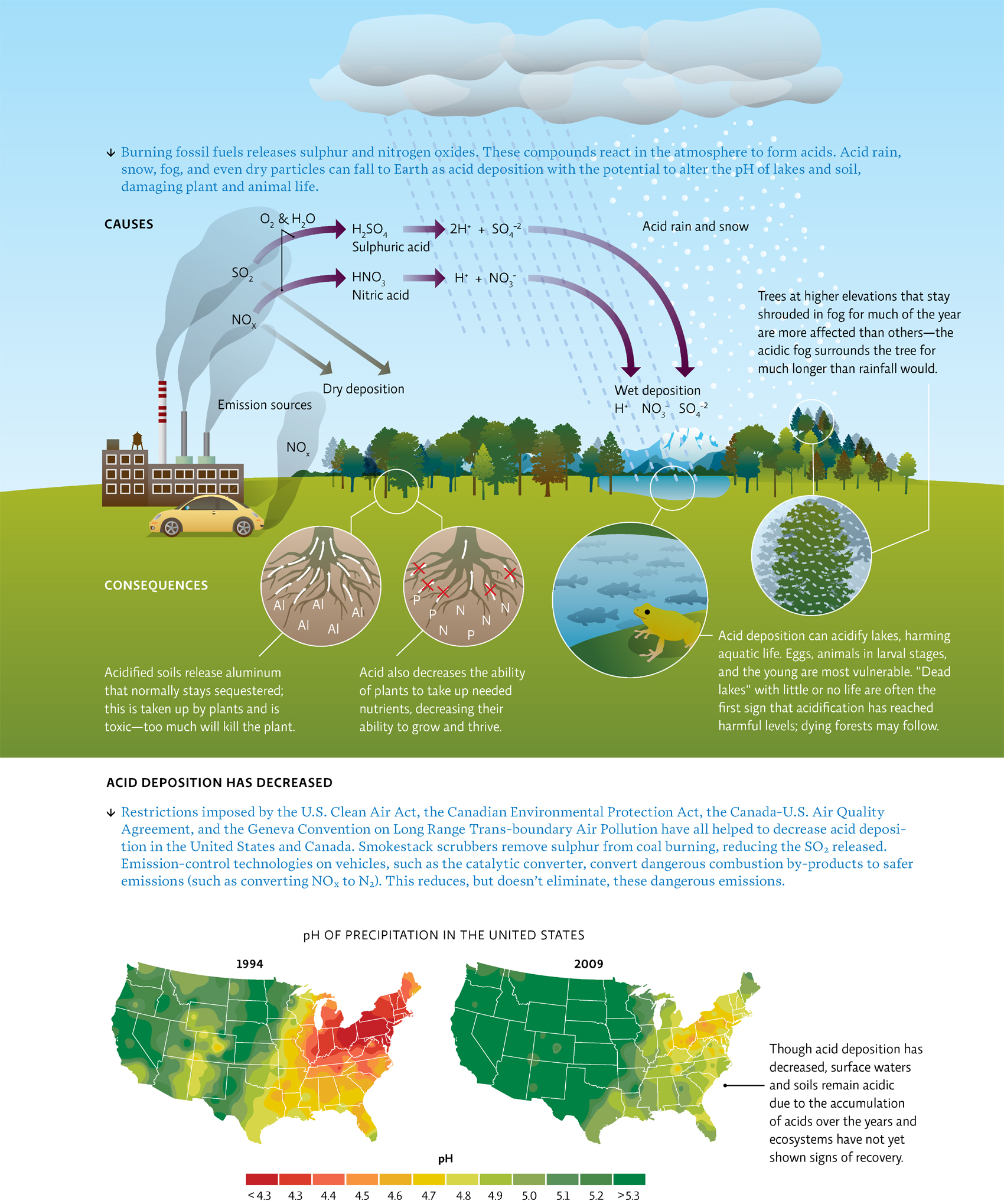21.5 Travelling pollution has far-reaching impacts.
One of the most problematic characteristics of air pollution is that it moves. Air pollution produced in one city can end up harming humans and other species halfway around the globe. For example, a large proportion of air pollution in Southern Ontario originates in the Ohio Valley, where it is released by tall smokestacks of coal-burning electrical power plants. Prevailing winds bring the pollution northeast across Lake Erie. There, it not only pollutes the air but also produces acid deposition—sulphur and nitrogen emissions that react with oxygen and water to form acids that can fall back to ground as acid rain or snow. Acidification of soil due to acid deposition can change the soil chemistry and mobilize toxic metals such as aluminum, hindering plants’ ability to take up water. Acids leach nutrients from the soil, too, reducing the amount of calcium, magnesium, and potassium available to plants in topsoil. Taken together, these impacts can decrease plant growth, weaken plants so they are more vulnerable to disease or pests, and even kill them. This acid deposition remains a problem in the northeastern United States and eastern Canada. (See Chapter 13 for more on the pH scale and acidification). [infographic 21.5]

Proof that air pollution can travel long distances can be found in the far north. Prevailing air currents pick up pollutants from the western United States, conveying them all the way to Lake Laberge in the Yukon, where the moisture condenses, forms clouds, and falls on the lake as rain or snow. Thus, even the most isolated regions on Earth are vulnerable to the effects of air pollution, because atmospheric and hydrologic circulation moves chemical and particulate pollutants around the globe.
Acid rain in eastern Canada, pollution in Lake Laberge, and stratospheric ozone depletion are transboundary pollution problems because regions that suffer from the pollution are not necessarily the ones that released the pollutants. This means that even if an area does not produce pollution itself, its air may still be toxic. With Environment Canada’s Air Quality Health Index available online, people can search for up-to-date air quality reports for many Canadian communities.
381
382